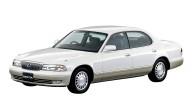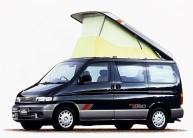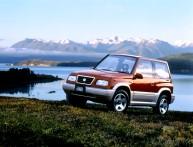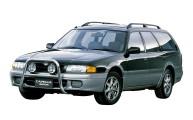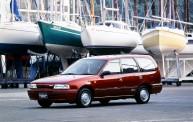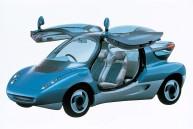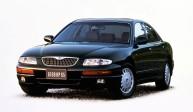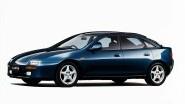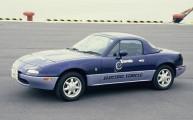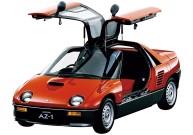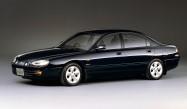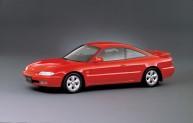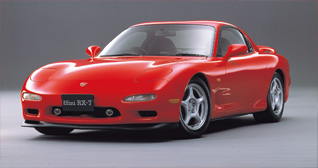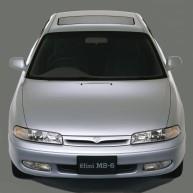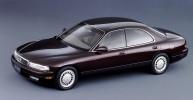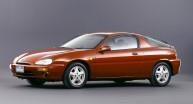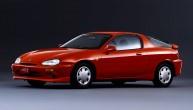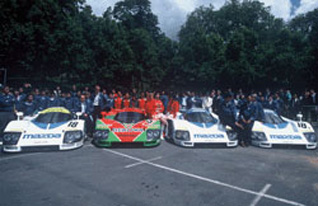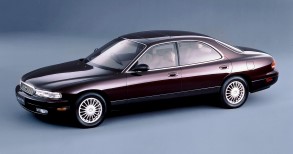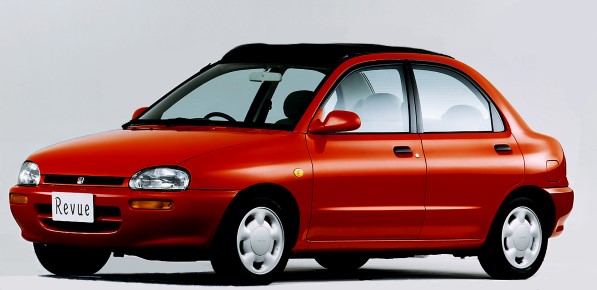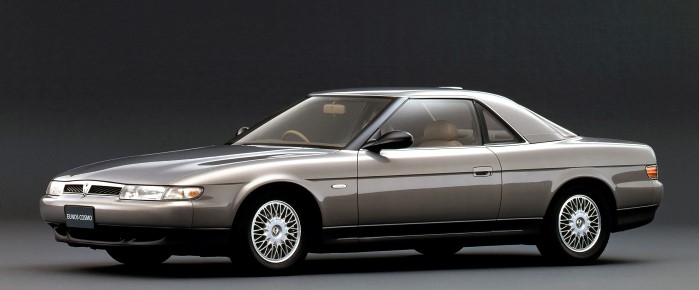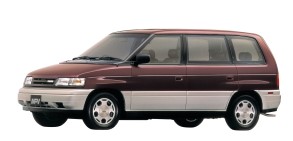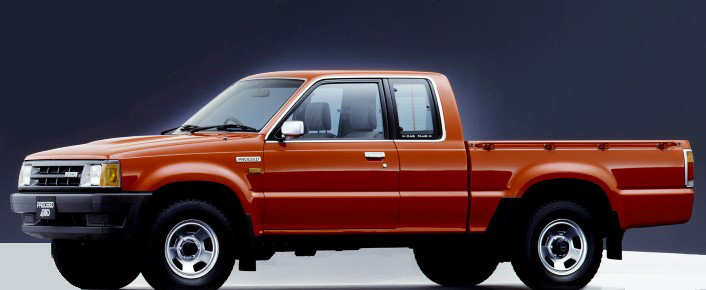History(1990~1999)
1999
| Corporate History | Product History |
12·Mark Fields is appointed president. |
12·Adds first passenger wagon to Scrum series It featured a SOHC turbo engine with max output of 64ps. 4WD models adopted a full-time 4WD system. |
11·Announces the development and production of new global engine family in cooperation with Ford. |
11·Develops a technique to strengthen body frame with structural foam ·Announces major update for Capella (626) wagon and sedan |
10·Donates four Bongo vans to quake-affected areas in Taiwan
|
10·Develops advanced safety vehicle MAZDA ASV-2
|
09·Entire Hofu Plant obtains environmental ISO certification. |
09·Updates Bongo Friendee The output of the diesel engine was improved and a variable geometry turbocharger was adopted. |
08·Improves female employees'job conditions. |
|
07·Updates Bongo Brawny van and truck |
|
06·Cumulative production at AAI reaches 2 million units.·Mazda reaches an agreement with Mitsubishi to supply small commercial vehicles to Mitsubishi. |
06·Introduces the New MPV
In addition to highly efficient packaging, ease of use was enhanced with Karakuri Seats and rear sliding doors on both sides. The second-row seats could slide left and right, enabling them to be used as either two captain’s seats or a bench seat. The third-row seat could be stowed into the floor. It could also be turned around to face the rear while the car was stopped for tailgate parties. The model featured a 2.5-liter V6 DOHC engine (max power: 170ps/6,250rpm; max torque: 21.1kg-m/5,000rpm) or a 2.0-liter in-line 4-cylinder DOHC engine (max power: 135ps/6,000rpm; max torque: 18.0kg-m/4,000rpm.) An electrically controlled 4-speed column automatic transmission system was adopted.
·Introduces the fourth-generation new Bongo van / truck
Its cab-over body type realized excellent cargo space and maneuverability. A newly developed impact-absorbing frame was employed. All models adopted LSPV (Load Sensing Proportioning Valve) which adjusts braking force by detecting the load applied to the rear wheels, as standard. The gasoline model featured a 1.8-liter SOHC engine (F8-E type) with EGI (Max output: 90ps/5,000rpm, max. torque: 13.8kg-m/2,500rpm) The diesel model featured a 2.2-liter in-line 4-cylinder engine (R2-type). (Max power: 79ps/4,250rpm, max. torque: 14.1kg-m/2,000rpm)
·Introduces the sixth-generation Familia van and Familia business wagon
All models adopted a newly developed engine. A 1.3-liter and a 1.5-liter DOHC gasoline engines for Familia van 2WD models and a 1.8-liter DOHC gasoline for the 4WD were available. In addition, a 2.2-liter DOHC diesel was also made available. For Familia business wagon, a 1.5-liter DOHC gasoline LEV spec (2WD) and a 1.8-liter DOHC gasoline engine (4WD) were available. Auto Control 4WD system that automatically controls the most suitable torque distribution to the rear wheels in accordance with the road surface condition was adopted. |
05・Updates Titan ·Starts selling special needs Premacy with rotating passenger seat |
|
04·New brand message "Get it and be moved." is launched. |
04·Develops aldehyde remover, "Life Breath" ·Updates “AZ-wagon i” wheelchair transportation vehicle |
03・Introduces Laputa (micro-mini vehicle)
It is a new genre of car that offers superior space utility and excellent off-road driving performance. Three-door and five-door bodies were available and featured different designs. Full-time 4WD system was adopted.
・Introduces the first - generation Premacy
It had three rows of seats in its compact body and could accommodate seven people. While offering a variety of seating arrangements for versatile use, the model also achieved excellent handling and steering stability. There was a walk-through between the driver and passenger seats and the second-row seats. It offered a long sliding range of 1,800mm for the second-row seat for three people. The seven-seater model offered not only single and double folding function but also detaching mechanism. Air filter with aldehyde-removing function was adopted for full-auto air conditioner. A 1.8-liter in-line 4-cylinder DOHC engine (Max output: 135ps/6,200rpm, max. torque: 16.5kg-m/4,500rpm. Full-time 4WD system with viscous limited slip differential was adopted to 4WD models. |
|
02·Cumulative production of Roadster (MX-5/MX-5 Miata) reaches 500,000 units |
|
01·Introduces the third - generation Scrum van and truck
The front nose was extended and the front wheels were positioned forward of cabin, creating a semi-cab-over body type. The width of the cargo are was expanded for more room. For vans, both standard and high roofs were available. Two drive systems, FWD and 4WD were available |
1998
| Corporate History | Product History |
12·AAT starts exporting pickup trucks |
12・Adopts 280ps rotary engine for RX-7 |
10・Deverops new plastic processing technology ・Inrroduces AZ-offroad
It adopted a part-time all-wheel drive system that could switch between FWD and AWD while driving, achieving serious rough-road ability. It also featured a turbo engine with intercooler. Max power: 64ps/6500rpm, max. torque: 10.8kg-m/3500rpm Adopted impact absorbing body with a ladder-shaped frame
Introduces the second-generation AZ-Wagon
It adopted a newly developed impact absorbing body for better safety performance. All models were 5-door style and the body size was enlarged. The model equipped with a DOHC engine with a turbocharger that boasteds 64ps of max. power had large fog lamps, a tall grille and multi-reflector headlamps on the front bumper.
Introduces the fourth-generation Carol
A newly developed impact absorbing body is adopted for better safety performance. With an enlarged body, the cabin was more spacious and the capacity of the luggage room was increased. Came in two body types: a three-door and five-door hatchback.
|
|
09·Hofu Nishinoura Plant acquires ISO 14001 certification. |
09・Introdues updated Mazda2 |
08·Mazda establishes the Mazda Motor Logistics Europe N.V. (MLE). |
|
07·Starts selling Thai-made new pick up truck, B-Series ·AAT in Thailand starts mass production |
07·Caplla Series Powered By The First Direct-Injection Diesel Engine In 2.0-Liter Class. .Updates Familia (323) wagon A 1.8-liter DOHC engine added. |
06·Introduces 9th generation Familia (323) in Japan
Adds two body types, S-wagon and sedan Three-door hatchback and wagon remain in the lineup There were four types of gasoline engines available: a 1.8-liter DOHC with the highest output of 135 ps, a 1.5-liter DOHC engine with sequential valve timing with max output of 130 ps, a 1.5-liter DOHC with max. output of 110 ps and a 1.3-liter SOHC with mIn addition, a 2.0-liter diesel engine (max power of 70 ps at 4650 rpm, max torque of 13.2 km at 2500 rpm.)ax output of 85ps (figures are net). In addition, a 2.0-liter diesel engine (max power of 70 ps at 4650 rpm, max torque of 13.2 km at 2500 rpm.) Full-time AWD with viscous coupling system and a real-time AWD with rotary blade coupling system were available for the AWD models. The S-Wagon was a station wagon body type so it had a spacious cabin while the overall length was shorter than that of the sedan for nimble driving. Seat sliding mechanism and split reclining seat backs were adopted for the rear seats. Versatile seating arrangements included a 50:50 split fold-down and double folding, etc.
|
|
05·Opens a Female Employee Counseling Office.·AAT starts production. ·Mazda Demio and Ford Festiva Mini-Wagon Exceed 200,000 Production Mark. |
05・Introduces a compact cab over van EV, Bongo EV Driving range was 100 km per charge (at 10-15 test drive mode).
|
04·Participates in the Ford/ Daimler-Benz/ Ballard alliance to develop fuel-cell technology for future vehicles
|
04・MDI phase II begins
・Joins fuel cell development project |
03·Strengthens its drive into Europe
|
03·Develops New Three-way Catalyst ・A new model grade is added to Proceed levante lineup It was available with a 2.5-liter V6 engine or a 2.0-liter diesel engine with an intercooled turbocharger and an exclusive wide fender.
・The new compact pickup truck is displayed at the Bangkok International Motor Show. |
02·Mazda establishes "Voluntary action plan for recycling promotion" . |
|
01·New corporate symbol is released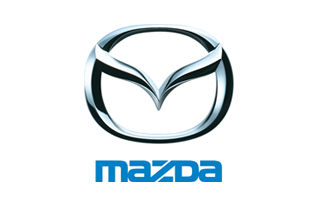 |
01·Introduces 2nd generations Mazda Roadster (MX-5)
Fixed headlamps were adopted. Came with a 1.8-liter I4 DOHC engine (with max. power (net) of 145ps/6500rpm) or a 1.6-liter I4 DOHC engine (with max power (net) of 125 ps at 6500 rpm). A 6-speed manual transmission model was available with the 1.8-liter engine. Glass rear window with defroster was available for the soft top model. (Excluding the standard model grade) Luggage space was increased to 144 liter (VDA standard). A wind deflector was adopted to reduce buffeting in the cabin. The rigid and safe MAGMA body was adopted. Two impact bars were installed in the doors. SRS airbags were standard equipment for both driver and passenger seats.
|
1997
| Corporate History | Product History |
12·Establishes Ethics Committee |
12·Develops the Demio FCEV, fuel-cell electric vehicle
Its fuel cell system comprised a fuel cell stack, a metal hydride hydrogen storage tank and an air compressor. It featured an ultra-capacitor and a drive motor. |
11·James E. Miller is appointed president |
11·Introduces all-new Mazda Capella Wagon (626 Wagon / 626 Station-Wagon)
The wagon offered a comfortable space based on “people first” philosophy. The wheelbase was extended and height raised, increasing not only luggage space but cabin space too. ・Introduces 2nd generation Proceed Revante
It was a compact cross country 4WD model. It featured a 2.0-liter DOHC gasoline engine and came in two body types: a three-door and five-door hatchback.
|
10·North American operations are streamlined (MNAO starts) |
10・Starts selling RX-7 Type RS-R, the 30th anniversary limited edition to commemorate the birth of rotary engine Mazda Anfini RX-7 renamed Mazda RX-7 ・Updates Titan It adopted a new front grille design and dump models featured weatherproof steel cargo beds. |
08· Introduces 7th generation Capella (626) sedan
It adopted a compact body and fit into the category of models whose number plate starts from 5. All models featured an in-line 4-cylinder DOHC diluted burn engine. By improving the charging efficiency and combustion, FS-ZE type 2.0-liter DOHC engine (premium gasoline) provided max output of 170ps/6,800rpm (net) and max torque of 18.4kg・m/5,000rpm (net.) A 2.0-liter and a 1.8-liter DOHC engines that use regular gasoline were also available. The model offered a variety of seat arrangements as well as a comfortable riding environment that reduced fatigue. The model adopted a new body (MAGMA) that was highly rigid and offered good safety protection as well as the world's first SRS side airbag system with head protection. All FF models adopted traction control system as standard. |
|
07·Resumes export of passenger vehicles to Taiwan |
07·Eunos 800 renamed Millenia |
06·Cumulative production of Demio (121) and Festiva mini wagon reach 100,000 units ·Mazda inaugurates its new brand symbol, the Mazda M |
06·Updates Familia van/wagon Displacement of diesel engine increased to 2.0 liters. The 4WD system of the diesel model was changed to a full-time system. |
05·Announces a minor update for Bongo Brawny van and truck A WL-type 2.5-liter in-line 4-cylinder diesel engine with max output of 88ps was newly added. The existing 2.2-liter diesel engine’s max output was improved to 76ps. |
|
04・Mazda Hospital raunches lung cancer screening program ·Mazda implements a new merit-based personnel system |
04・Receives award from the head of Japan's patent office for disclosing patents and technology |
02·Embarks on enhancement of North American operations |
02・Starts selling Citroen Chanson |
1996
| Corporate History | Product History |
12·Launches Mazda Digital Innovation (MDI) |
|
11・Cumulative production of MX-5 reaches 400,000 units |
11·Demio wins "Japan Car of the Year Special Award" ·Updates Proceed Levante The engine lineup is renewed, newly adding a 2.5-liter V6 DOHC engine, a 2.0-liter in-line 4-cylinder DOHC engine and a 2.0-liter diesel turbo engine with intercooler. |
10·Demio (121) wins the '96-'97 RJC New Car of the Year in Japan ·Announces major update for Familia (323) For the 1.5-liter DOHC engine, maximum output and torque were improved to 110ps and 14.0kg-m respectively. A model grade with a 1.3-liter engine was newly added.For the 3-door hatchback, multi-reflector headlights and front/rear blister fenders were adopted. ·Updates Bongo van and Bongo truck The maximum output of 2.2-liter diesel engine was improved to 76ps. |
|
09·Establishes Mazda Volunteer Center |
|
08·Introduces the first-generation Demio (121) in Japan
|
|
07·Updates Capella (626) wagon A 2.0-liter DOHC engine with maximum power raised to 165ps was added to the 4WD model. A 2.0-liter DOHC engine with maximum power raised to 145ps was added to the 2WD model. An available cruising series featured large fog lights built into the bumper. |
|
06·Mazda acquires ISO 9001certification first among Japanese automakers·Henry D.G. Wallace becomes president |
06·Adds a five-door model to AZ-Wagon ·Updates Familia (323) wagon Adds a 1.8-liter DOHC engine ·Updates Proceed Cab Plus, a small pickup truck It adopted a newly designed, chrome-plated front grille as well as side protectors. The model featured bucket seat for the front and a newly designed instrument panel. In addition to a five-speed manual transmission, an electronically controlled four-speed automatic transmission was added. Fuel tank capacity was enlarged from 56 to 70 liters. |
05·Share holding ratio of Ford increased from 25% to 33.4% |
05·Starts selling an LPG-powered Bongo Brawny truck |
04·Anfini dealerships renamed Mazda Anfini·Eunos dealerships integrated into Mazda Anfini or Mazda dealerships ·Cumulative production of passenger cars in Japan reaches 20 million units |
|
03·Introduces Ford-produced Mazda 121 into major European markets ・Launches official Mazda wwbsite |
03·Adds Station wagon body type (Break) to Citroen Xantia ·Updates Proceed Marvie A 2.5-liter diesel turbo engine was added. A 2.5-liter in-line 4-cylinder OHC gasoline engine was made available. |
01·Cumulative domestic production of Familia (323) reaches 10 million units |
1995
| Corporate History | Product History |
12・Cumulative production of Familia (323) reaches 10 million units |
|
11·Mazda and Ford jointly establish AutoAlliance (Thailand) Company Limited (AAT) |
11・Introduces 3rd-generation Carol The model adopted a bumper made of colored material for enhanced recyclability.
・Introduces 2nd-generation Sentia
The model featured a regal exterior design, roomier rear seats that allowed easier ingress and egress, and a high-capacity trunk room. A 3.0-liter V6 DOHC engine Four-wheel multi-link suspension was standard on all model grades. An electric four-wheel steering system was adopted for some model grades. |
10·Completes Mazda ASV, an advanced safety vehicle. |
|
06・ Announces major update for Titan Driving performance was enhanced with three new high-powered engines: a 3.0-liter diesel, a 4.3-liter and a 4.6-liter direct-injection diesel engines. The 4.6-liter model featured a 6-speed manual transmission, realizing low fuel consumption and quietness at high speed driving. An LPG engine was added to lineup.
·Introduces Bongo Friendee in Japan
The 4th-generation Bongo adopted a 1.3 box style and featured a spacious interior with multiple seating arrangements. Auto Free Top models featured a raisable roof that created a loft large enough for two adults to sleep. Seating capacity: 5, 6 (Camper), 7 or 8 people. Engines: a newly-developed 2.5-liter diesel turbo engine with intercooler, a 2.5-liter V6 gasoline engine, a 2.0-liter in-line 4-cylinder gasoline engine. Drive system: FF or full-time 4WD |
|
05・Opens a new parts center in Belgium |
05・Hydrogen-powered Capella Cargo wagon starts driving on public roads The model featured a hydrogen rotary engine and a fuel tank with built-in metal hydrides. |
04·Cumulative production in Japan reaches 30 million units |
|
03・Introduces Titan Motorhome camper van
・Miller-cycle engine wins technology award from the Japan Society of Mechanical Engineers
・Adds Break station wagon to Citroen ZX lineup |
|
02・Introduces Proceed Levante
A 2.0-liter V6DOHC gasoline engine and a 2.0-liter diesel turbo engine were available. The model came in two body types: short (overall length: 3,715mm) and long (4,095mm). All model grades featured part-time 4-wheel-drive.
|
1994
| Corporate History | Product History |
12·Transmission supply to Ford reaches 10 million units. |
|
11・Mazda Training Center is established in Bejing, China, for training for aftersales services. ·Acquires the ISO 9002 certificate, first among Japanese auto makers. |
|
10・Introduces Capella Wagon
The Capella Cargo (known as 626 Station Wagon overseas) introduced in 1988 is renamed and introduced as a station-wagon exclusive model.A grille guard and large fog lamps are available for some model grades, and the engine lineup includes a 1.8-liter DOHC engine and a 2.0-liter diesel engine with a pressure wave supercharger.
・Adds a model equipped with a 1.7-L diesel intercooled engine with a turbo charger to the Famillia sedan model grade lineup. An air scoop is added to the bonnet for the intercooler, and the model boasts net maximum output of 88ps/4500 rpm and maximum torque of 17.0kg-m/2,500rpm.
・A model with full-time AWD system is added to the Familia sedan model grade lineup. A 1.6-L DOHC engine and a 1.7-L intercooled diesel engine with a turbo charger are available for the model. The maximum output for the 1.6-L Inline 4-cylinder engine is 115 ps/6,000rpm boasting 14.5 kg-m/3500rpm of maximum torque. With a new larger front bumper, the overall length of the vehicle is extended by 70mm, and for the overall height, it is 2-mm taler than the previous model. |
|
09・Cumulative production of MPV (MPV) reaches 300,000 units
・Employees who singed up with the Mazda Specialist Bank for their special skills and expertise become active for social contribution activities in the local communities |
09・A model with a new lean-burn engine called Z-Lean is added to the lineup of Familia sedan. it reaches the fuel economy of 20.0km/L ( 5-speed manual transmission) and 15.6 km/L (4-speed automatic transmission) with the 10-15 test cycle mode. A three-way catalyst for a lean burn engine is installed. The maximum output for the 1.5-L Inline 4-cylinder DOHC Z-Lean engine is 94 ps/5,500rpm boasting 13.5 kg-m of maximum torque.
·Introduces AZ-Wagon [Suzuki OEM].
·Introduces Familia Van/Wagon [Nissan OEM]
|
08·Introduces the 6th generation Capella
This is developed in line with a concept of "comfort made for the Japanese market." It boasts roomy cabin and luggage space in a vehicle which is categorized in a smaller sized compact vehicle. There are two engines available for the model: One is a 2.0-liter inline 4 cylinder DOHC engine(net output 125ps/5500rpm and max. torque 17.6kg-m/4500rpm), and the other is a 1.8-liter inline 4-cylinder DOHC engine (max. output of 115 ps/5500rpm, and max. torque of 16.0kg-m/4500 rpm). Both FWD and full-time AWD are available. |
|
|
|
06·Introduces the 8th generation Familia (323/323F/323 Protege/Protege(US)) The model is developed under the product concept of the best compact. Two body types are available; a sporty hatchback, Famila Neo, and Familia sedan. The engine lineup includes the efficient Inline, 4-cylinder 1.5-liter DOHC engine (Z5-DE type), a sporty high-rotation inline, 4-cylinder 1.5-liter DOHC (B5-ZE type), and a 1.8-liter DOHC (BP-ZE type). (For some model grades, a 1.3-liter engine is available.) |
05・The Mazda Museum opens within the headquarters' premises. |
|
04・Enfini RX-7 wins the 1994 James Hardie 12 Hour Production Race for three consecutive years. The number 7 of BP Mazda Motorsport team (drivers; Gregg Hansford, Neil Crompton, Allan Grice) wins the race.
・Releases co-generation system |
|
03・Mazda develops a 6-seater Bongo EV
Equipped with a lead battery, the model's standard charging time is eight hours. The maximum speed is 120km/h, and the driving range is 170km (at 40km/h of constant velocity drive). |
|
02·Mazda develops a compressed-natural-gas-powered truck.
The model is modified to use natural gas as a fuel from a 4-liter diesel engine model. With five gas cylinders, the driving range expands to more than 650km (at 60km/h).
・Introduces the M2 1028 (MX-5) |
1993
| Corporate History | Product History |
12·Mazda and Ford enter into a long-term strategic relationship to enhance competitive strength. |
|
11・Driving a Mazda 323 GT-R, Alessandro Fassina of Rally Team Italia won the series championship in Group N of the World Rally Championship. |
|
10・Mazda and Nissan Motor Corporation enter into an OEM supply agreement for mutual supply of commercial vehicles. |
10・Exhibits a hydrogen rotary engine vehicle called HRX-2 at the Tokyo Motor Show
・Starts selling Citroen Xantia The model featured a 2.0-liter in-line 4-cylinder OHC engine and hydropneumatic suspension or advanced hydractive suspensionⅡ.
·Introduces Eunos 800 (Xedos9).
A 2.5-liter V6 engine model went on sale in October. The world's first Miller cycle engine model was introduced in November. The Miller cycle model adopted a 2254cc, V6 DOHC engine and a Lysholm compressor for high intake pressure. It generated a maximum output of 220ps/5,500 rpm (net) and maximum torque of 30.0kg-m/3,500 rpm while also offering good fuel economy. Four-wheel multi-link suspension and a yaw rate-sensing four-wheel steering system were adopted. An elegant body form with excellent aerodynamic performance was pursued. The hood was made of aluminum. Mica was used for all the body colors and a highly functional hi-reflex coating was adopted. |
09·Introduces Lantis (323F).
The model came in two body types: a 4-door hard top sedan and a 4-door hardtop coupe. Customers could choose between a 2.0-liter V6 DOHC engine (maximum output: 170ps) and a 1.8-liter in-line 4-cylinder DOHC engine. The model met safety regulations before they came into effect in April 1994. Furthermore, safety performance was improved to meet in-house crash standards raised in anticipation of stricter standards taking effect in the U.S. at the time. |
|
07・Holds a ceremony to mark the completion of energy center in Hofu |
|
06·Purchasing of new compact pick-up trucks from Ford for release in Canada and the U.S. starts. |
06・Successfully develops a new three-way catalyst for lean burn engines |
05·Cumulative production in AAI in the US reaches 1 million units. |
|
04·Cumulative production of Hofu-produced vehicles reaches 3 million units. ・Starts selling passenger vehicles (Mazda 323 and Mazda 626) produced in the Philippines |
04·Develops the world's first Miller cycle engine for cars
・RX-7 wins the overall championship in the James Hardie 12-Hour Production Race held in Bathurst, Australia for second year running. RX-7s driven by Mazda Australia Team scooped both first and second places. Alan Jones and Garry Walden, driving car No. 7, finished first and Charlie O'Brien and Gregg Hansford, driving car No. 1, came in second. |
03·Formulates "Environment-Related Activity Promotion Plan (Mazda Environmental Voluntary Plan)". |
|
01·Electric-powered vehicles based on the Mazda MX-5 are developed. It recorded a maximum speed of 130km/h (vehicle No.1's actual measurement) and ran for 180km (40km/h) on a single charge. The car used a nickel-cadmium battery. |
1992
| Corporate History | Product History |
12·Norimasa Furuta named chariman. |
|
11・Holds a ceremony to mark completion of Engineering Building No. 3 ・Cumulative production of Roadster (MX-5/MX-5 Miata) reaches 250,000 units |
11·Develops a pasenger car with a natural gas engine. |
10·Introduces AZ-1
A two-seater micro-mini coupe with gull-wing doors, the AZ-1 featured the first outer panel made entirely of plastic. A 660cc in-line 3-cylinder DOHC engine with intercooler turbo was installed in mid-ship layout. Max power was 64ps/6,500rpm (net) and max torque was 8.7kg-m/4,000rpm. A front-to-rear weight distribution of 44:56 was achieved with two occupants. The model was designed to be low-weight and low center of gravity (400mm with two occupants). It featured a quick and direct steering feel. |
|
08・Adds a 2.0-liter P.W.S. diesel engine to Capella Cargo 4WD model |
|
07·Equolize capital contribution to Autorama with Ford. |
07・Adds a 3.0-liter diesel engine to Bongo Brawny van (E-series) |
06·MMUC becomes AutoAlliance International, Inc., (AAI) an equal partnership between Mazda and Ford. |
06・Develops decomposition liquefaction catalyst technology ・ Adds 2.0i.e.(4AT) and 2.0 turbo model grades to Lancia Dedra lineup |
05・ Holds a completion and shipping ceremony for Mazda's Niho wharf, an on-premise wharf for international shipping |
05·Introduces Autozam Clef
It was the first Autozam sports saloon whose number plate started from 3. The model featured a 2.5-liter and a 2.0-liter V6 DOHC engine as well as a 2.0-liter in-line 4-cylinder DOHC engine (for 4WD). A wrap-around design from the instrument panel to the door panels was adopted. A full-auto air conditioner with electric louver was equipped as a standard feature.
・Adds a 2.5-liter V6 DOHC engine to the Cronos (626) lineup
・ Starts selling Citroen ZX at Eunos dealerships in Japan It featured a 1.6-liter in-line 4-cylinder OHC injection (single point) and a 1.9-liter in-line 4-cylinder OHC injection (multi-point) engine. |
04·The 'Mazda Global Environmental Charter' is adopted. |
04・RX-7 wins the overall championship in the 92 James Hardie 12-Hour Production Race held in Bathurst, Australia. |
03·Introduces Anfini MS-8
・ Adds a model with 2000 P.W.S. diesel engine to Cronos (626) lineup |
|
02・Together with Itochu Corporation, establishes a body manufacturing company called Hainan Mazda Motor & Stamping Co., Ltd. in Hainan ·Full-scale production starts in Hofu No.2 Plant. |
02·Introduces Eunos 500 (Xedos 6) in Japan
|
01・ Adds GT-R and GT-Ae model grades to Familia Astina (Mazda 323F) full-time 4WD three-door hatchback
·Introduces MX-6
|
1991
| Corporate History | Product History |
12·Norimasa Furuta and Yoshihiro Wada named vice chairman and president respectively. ·Starting exporting to Brazil
|
12·Introduces Anfini RX-7 (known as RX-7)
The aim was to develop a world-class sports car and the development concept was "the best rotary engine pure sports car." The 13B 2-rotor rotary engine (255ps) with sequential twin turbo charger was mounted in the traditional front mid-ship layout, achieving 50:50 weight distribution. Superb dynamic performance was achieved with thorough weight-saving measures as well as double wishbone suspension for all four wheels entirely made of aluminum. The weight-to-power ratio was 4.9kg per PS (metric horsepower). The model was popularly known as "FD". The third-generation Mazda RX-7 won the inaugural Japan New Car of the Year award from the Automotive Researchers' and Journalists' Conference of Japan (RJC) for its great styling and outstanding handling performance. |
11·Establishes Anfini sales channel (formerly Mazda Auto) in Japan. |
11·Introduces Anfini MS-6 (known as Mazda 626 )
·Introduces Anfini MS-9 (known as Mazda 929)
|
10·Cumulative production reaches 10 million commercial vehicles in Japan (since 1931). |
10·Introduces Cronoss (known as Mazda 626)
・ Exhibits Eunos 500 and MX-6, which were scheduled for sale, and a hydrogen rotary engine vehicle called HRX at the Tokyo Motor Show
|
06·Starts consignment production of MR90 at a Suzuki plant in Indonesia |
06·Introduces Eunos Presso(known as MX-3/Eunos 30X)
|
05·Introduces the first-generation Sentia (known as 929)
·Starts selling Lancia Dedra 2.0 i.e. at Autozam dealers |
|
|
|
03·Introduces all-new sporty coupe MX-3 at the Geneva International Motor Show |
02·Introduces "Senior Family" system, enabling employees to work beyond the mandatory retirement age of 60. |
|
01·Introduces childcare leave |
01·Introduces Proceed Marvie
|
1990
| Corporate History | Product History |
12
|
12
|
10・Starts selling Citroen BX16TZi at Eunos dealers.
|
|
09・Savanna RX-7 marks a total of 100 wins in the IMSA racing series in the US.
|
09·Introduces Autozam Revue (121).
The model featured a 1.5- and 1.3-liter in-line 4 cylinder SOHC engine. A model grade with a 3-way electric sliding canvas top was added to the lineup. |
08・Starts loading vehicles for export at berth B of Mazda's Niho wharf. |
|
07・Cumulative production of Savanna (RX-3, RX-7, etc.) reaches 1 million units. |
|
06・Starts production and sales of Mazda 323 in Taiwan. |
|
05·Holds grand opening for the European R&D Representative Office (MRE) in Germany.
・Announces the start of export of Familia (Mazda 323) to Soviet Union. |
05・Starts selling Familia (Mazda 323) GT-A, a base vehicle for motor sports competition.
|
04·Starts selling high-end personal coupe Eunos Cosmo at Eunos dealers.
This dynamic 2-door coupe model featured a 3- or 2-rotor rotary engine. The world's first mass-production model with a 3-rotor rotary engine coupled with a sequential twin turbo charger delivered outstanding dynamic performance. The Eunos Cosmo adopted double-wishbone front suspension and multi-link rear suspension with twin dampers. It was also the world's first car to feature a satellite navigation system.
・Starts selling Citroen AX at Eunos dealers. |
|
03・Starts selling Carol (micro-mini) featuring a new 657cc engine at Autozam dealers.
|
|
02・Starts selling Eunos Cargo, a one-box wagon, at Eunos dealers.
・Starts selling Lancia Thema at Autozam dealers.
・Starts selling Lancia Autobianki Y10 at Autozam dealers. |
|
01・Holds a ceremony to mark the completion of the Kenbuchi Proving Ground.
|
01·Introduces Proceed and MPV in Japan.
·Re-introduces Proceed in Japan.
|
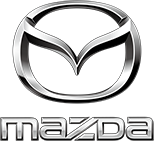

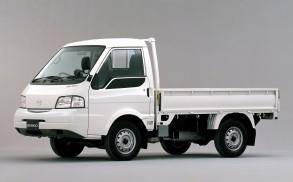
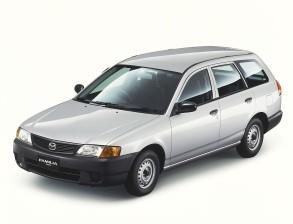
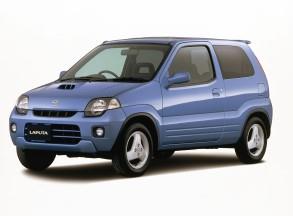
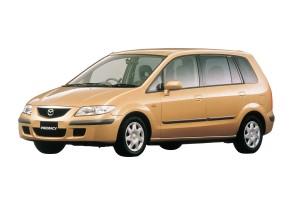
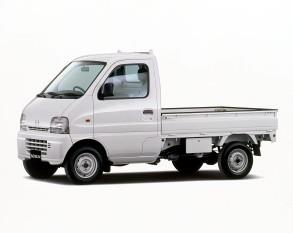
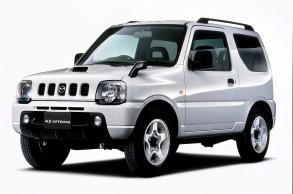
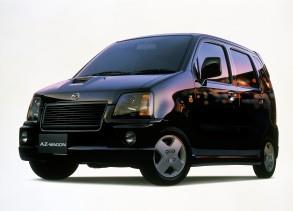
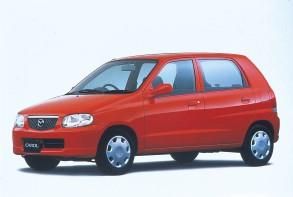
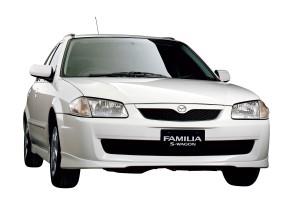
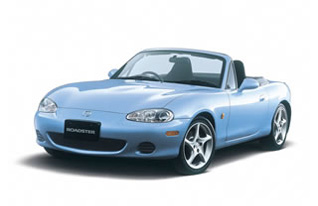
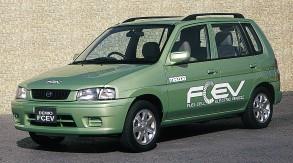

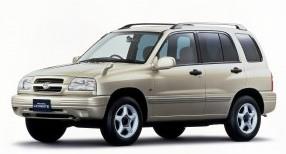
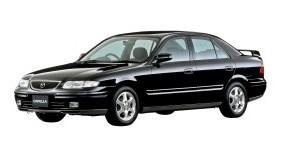
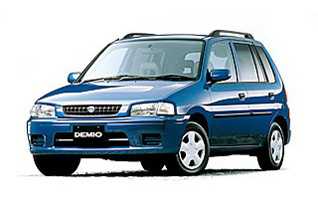 It featured a 1.3-liter or 1.5-liter SOHC engine. Though compact, it offered a variety of seating arrangements with full-flat seats, reclining rear seats with a double-folding mechanism. The Demio created a new genre of compact cars with the versatility to be useful in a wide range of situations from daily use to weekend leisure.
It featured a 1.3-liter or 1.5-liter SOHC engine. Though compact, it offered a variety of seating arrangements with full-flat seats, reclining rear seats with a double-folding mechanism. The Demio created a new genre of compact cars with the versatility to be useful in a wide range of situations from daily use to weekend leisure.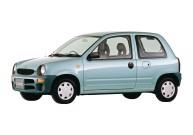 A driver-side SRS airbag was equipped as standard on all model grades, a first among micro-minis.
A driver-side SRS airbag was equipped as standard on all model grades, a first among micro-minis.